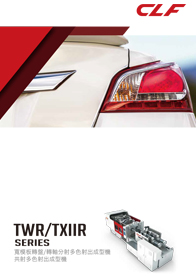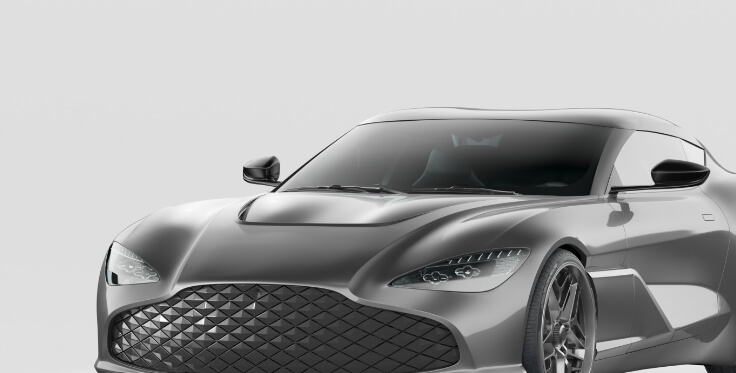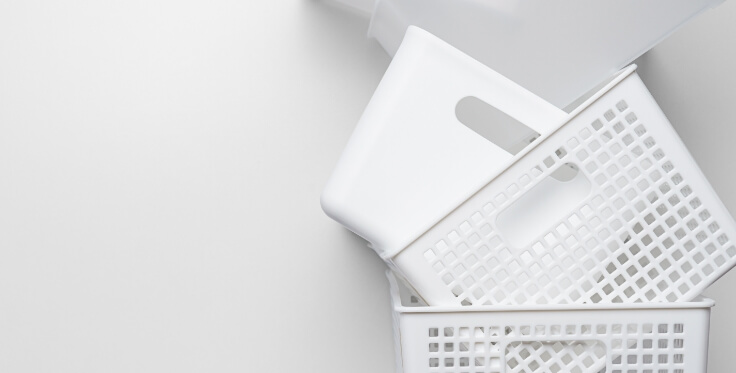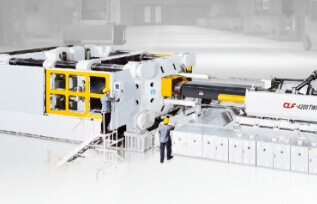Multi-Color Injection Molding Machine
Rotary Table, Separated/Co-Injection, and Two-Platen Multi-Color Injection Molding Solutions
At CLF, a trusted leader among global plastic injection molding machine manufacturers, we elevate multi-material innovation with our advanced TWR/TXIIR/TPIIR Series. Featuring precision rotary tables, independent injection systems, and high-rigidity two-platen structures, these machines empower you to produce complex multi-color and multi-material parts with outstanding precision, reduced secondary processing, and greater production profitability.
Covering clamping forces from 180 to 4000 tons, the TWR/TXIIR/TPIIR Series delivers optimized solutions for automotive, industrial, consumer, and outdoor products—backed by our decades of engineering excellence.
What is Multi-Color Injection Molding?
Multi-color plastic injection molding, also known as twin-shot or multi-shot molding, involves injecting two or more different materials or colors into a single mold to form a unified part. It typically integrates two to six injection units, each handling a different material or color.
This technique provides unparalleled flexibility in product design, streamlines production, and improves both the quality and cost-effectiveness of colorful and multi-material plastic products.
Performance at a Glance
| Model | Clamping Force (t) | Rotary Table Diameter (mm) | Injection Systems | Typical Applications |
|---|---|---|---|---|
| CLF-180TXIIR | 180 | 780 | Two/Three | Automotive Lamps, Home Appliances |
| CLF-230TXIIR | 230 | 810 | Two/Three | Power Tools, Storage Containers |
| CLF-500TWR | 500 | 1250 | Two/Three | Automotive Parts, Large Housings |
| CLF-650TWR | 650 | 1520 | Two/Three | Industrial Components, Furniture |
| CLF-1200TWR | 1200 | 1820 | Two/Three | Outdoor Products, Heavy Goods |
| CLF-1800TWR | 1800 | 2100 | Two/Three | Automotive Bumpers, Bulk Items |
| CLF-600TPIIR | 600 | – | Single/Double | Automotive Parts, Outdoor Components |
| CLF-1200TPIIR | 1200 | – | Single/Double | Heavy-Duty Products, Industrial Parts |
| CLF-3500TPIIR | 3500 | – | Single/Double | Large Automotive Components, Industrial Bins |
For full TXIIR/TWR specifications including 300t, 420t, 1200t, and 1800t models, please download our detailed spec sheet.
Key Benefits of Multi-Color Injection Molding
-
Reduced Assembly Costs
Consolidate multiple parts into a single molding cycle, eliminating secondary assembly steps and reducing labor costs. -
Enhanced Product Aesthetics
Achieve multi-color effects, marble patterns, or distinct surface textures directly from the mold. -
Improved Product Functionality
Combine hard and soft materials for ergonomic designs, such as grips, seals, or flexible joints. -
Material Cost Optimization
Use lower-cost core materials with premium surface finishes, balancing performance with cost-efficiency. -
Lightweight and High-Strength Solutions
Design sandwich structures for weight reduction without compromising mechanical strength. -
Space-Saving Two-Platen Design (TPIIR)
The TPIIR’s two-platen architecture offers a compact footprint, high structural rigidity, and energy-efficient operation—ideal for large and heavy-duty multi-color parts.
Rotary Table vs Separated Injection vs Two-Platen: Which is Right for You?
-
Rotary Table Multi-Color Molding (TWR Series)
Perfect for sequential multi-shot molding with 90°, 120°, or 180° part rotations—ideal for complex, high-precision multi-material products.

-
Separated/Co-Injection Multi-Color Molding (TXIIR Series)
Suited for simultaneous co-injection to create marble, sandwich, or striped effects—best for large, non-rotating molds.


-
Two-Platen Multi-Color Molding (TPIIR Series)
Ideal for high-tonnage, large-format applications where space-saving and high rigidity are critical. The TPIIR supports multi-color and multi-set injections while reducing mold deformation and maximizing stability.
Advanced Multi-Color Injection Molding Techniques
CLF offers a full suite of overmolding solutions tailored to different product structures, design goals, and material combinations. Our advanced overmolding processes support both sequential and simultaneous injections to produce seamless multi-color, multi-material parts.
Overmolding Technologies
-
Bi-Injection Molding
Utilizes two injection units to inject materials into the cavity via separate ports. This method achieves clear color separation and is ideal for two-tone aesthetic or functional designs.

-
Shaft Return Injection Molding
Combines core-back movement with secondary injection. After the first shot forms the outer shell, the mold core retracts to create a cavity for the second material—producing components with internal multi-material layering and enhanced functionality.

-
Rotary Table Injection Molding
Employs a rotary mechanism to alternate between multiple male and female molds. This is ideal for sequential injection of different materials or colors, enabling complex structures such as dual-hardness or multi-surface components.

-
Rotary Holder Injection Molding
A rotating product holder moves parts between different cavities, allowing overmolding of distinct materials without needing a rotary table. This technique is well-suited for irregular shapes, tool handles, or hybrid material interfaces.

These overmolding processes allow CLF customers to eliminate assembly steps, improve bonding strength, and achieve innovative designs that stand out in a competitive market.
Co-Injection Technologies
-
Sandwich Molding
: Core and surface layer injection for enhanced performance.

-
Marble Pattern Molding
: Create swirling multi-color visual effects.

-
Striped Product Molding
: Produce decorative stripe designs.

Core Features of CLF Multi-Color Injection Molding Machines
-
Precision Rotary Table Technology
High-accuracy rotating tables ensure seamless part rotations for multi-shot molding. -
Flexible and Independent Injection Systems
Dual- or triple-independent injection stations support sequential or simultaneous injection processes. -
High-Rigidity Two-Platen Design (TPIIR)
The TPIIR’s two-platen structure eliminates toggle deformation, providing stable, precise clamping force even for the largest molds. -
In-House Precision Machining Excellence
All key components, including mold platens and tie bars, are precision machined in-house using Japanese Toshiba and Kotobuki equipment for long-term accuracy and reliability.
Key Factors to Consider Before Choosing a Multi-Color Injection Molding Machine
-
Diversity in Product Design
Understand the product’s color separation, marble effects, or striped pattern requirements to select the appropriate molding method. -
Complexity of Mold Design
Multi-color molds often require intricate design. Early alignment between mold makers and machine structure is critical to avoid defects and additional costs. -
Different Machine Structures/Injection Unit Designs
-
Rotary Table (TWR)
: Best for rotating molds and multi-shot sequential molding. -
Separated Injection (TXIIR)
: Great for layered or marble effects. -
Two-Platen (TPIIR)
: Combines multi-color injection with space-saving, high-rigidity benefits.
-
Real-World Applications of Multi-Color Injection Molding
-
Automotive Industry
: Tail lamps, dashboards, bumpers, multi-color trims—TPIIR excels in producing large automotive exterior parts with precision. -
Household Goods
: Dual-color kitchenware, ergonomic furniture, storage bins. -
Industrial Equipment
: Multi-material tool handles, protective covers, heavy-duty outdoor components. -
Outdoor Products
: Colorful playground equipment, durable furniture. -
Consumer Electronics
: Dual-material casings, tactile interfaces.
New TPIIR Success Stories:
-
Leading Automotive Supplier
: Deployed CLF-3500TPIIR for large automotive bumper components, significantly improving production efficiency and part consistency. -
Outdoor Goods Manufacturer
: Integrated CLF-1200TPIIR to produce high-rigidity dual-color outdoor furniture with minimized floor space footprint.
Frequently Asked Questions
-
What’s the difference between two and three injection units?
A: Two units are perfect for dual-color or dual-material parts. Three units enable tri-color combinations and more complex designs. -
Can the TWR/TXIIR/TPIIR Series handle marble or striped patterns?
A: Yes, our specialized nozzle and injection control technology enable marble, striped, and sandwich structures with precision. -
How does CLF ensure long-term molding accuracy?
A: Through in-house machining of mold platens, tie bars, and precision components—achieving exceptional alignment and low maintenance. -
Is it possible to integrate robotic part removal and packaging?
A: Absolutely. Our machines are designed to be fully compatible with automation systems, boosting productivity and safety.










